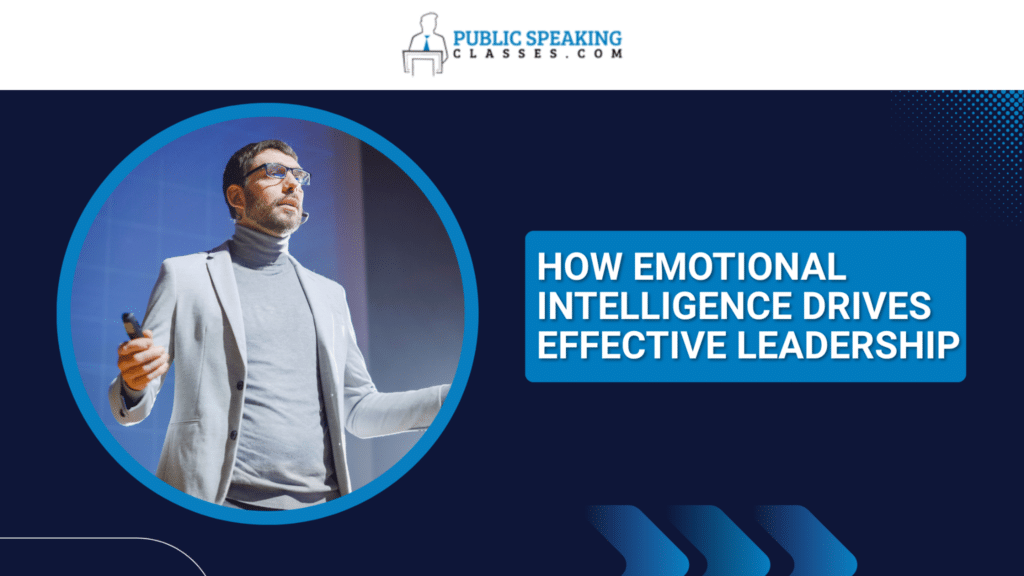If you’ve ever wondered why some leaders inspire fierce loyalty while others struggle to get buy-in on basic initiatives, here’s the truth:
It’s not about IQ. It’s not about charisma. It’s about emotional intelligence.
In fact, emotional intelligence leadership is often the silent force behind every great leader you’ve admired. It’s what allows someone to stay composed during conflict, listen when others feel unheard, and lead teams that don’t just perform—but thrive.
And while many still see emotional intelligence as a “soft skill,” the data—and the results—say otherwise.
This article isn’t about emotional fluff. It’s about the practical, measurable ways EQ drives influence, engagement, and leadership effectiveness in today’s workplace.
Let’s break it down.
What Is Emotional Intelligence in Leadership?
At its core, emotional intelligence is your ability to recognize, understand, and manage your own emotions—and those of others.
When applied to leadership, emotional intelligence becomes a multi-tool. It helps you navigate tough conversations, motivate under pressure, build deep trust, and maintain clarity even in high-stakes situations.
Emotional intelligence leadership isn’t about being agreeable or avoiding hard decisions. It’s about using emotional data just as strategically as financial or operational data.
And unlike traditional leadership traits—like decisiveness or authority—EQ doesn’t depend on personality. It’s a trainable, repeatable framework that fuels everything from empathy in leadership to team morale.
The 5 Core Components of Emotionally Intelligent Leadership
To lead with emotional intelligence, you need to master five key competencies—each one reinforcing the next:
- Self-Awareness
Recognizing your emotional triggers, your strengths, and how your mood affects your team. Leaders with self-awareness don’t get blindsided by their own reactions. - Self-Regulation
Keeping emotions in check, especially under pressure. This is emotional management in action—staying calm during conflict instead of becoming reactive. - Motivation
Driven not by fear or external pressure, but by purpose and goals. This inner drive builds trust and resilience within your team. - Empathy
The ability to understand and feel what others are experiencing. Empathy in leadership doesn’t mean always agreeing—it means always understanding. - Social Skills
Building connections, navigating conflict, and communicating clearly. Strong social skills improve workplace relationships and foster long-term employee engagement.
These aren’t abstract ideas—they’re operational tools. And leaders who use them outperform those who don’t.
How Emotional Intelligence Drives Real Leadership Outcomes
Let’s say you walk into a team meeting. Morale is low. There’s a brewing conflict between departments. The instinct might be to double down on strategy or push harder on deadlines.
But a leader grounded in emotional intelligence leadership takes a different approach.
You pause. You read the emotional temperature in the room. You name the tension, listen without defensiveness, and create space for shared understanding. You regulate your tone. You deliver direction clearly but with empathy.
What happens next? The team leans in. They feel heard. Tension deescalates. People start solving problems instead of avoiding them.
That’s emotional leadership at work—and it leads to measurable gains in employee engagement, productivity, and psychological safety.
Teams led by emotionally intelligent leaders show lower turnover, higher collaboration, and stronger innovation. And it all starts with emotional awareness and emotional connection.
Emotional Intelligence vs. Traditional Leadership Styles
Old-school leadership often favors command and control. Speak louder. Move faster. Show no weakness.
But today’s workplace doesn’t run on hierarchy—it runs on alignment. And that means the best leaders don’t demand authority. They earn influence.
Compassionate leadership doesn’t mean compromising expectations. It means seeing people as people, not just productivity units. It means leading with clarity and humanity.
In fact, EQ isn’t about being “soft.” It’s about being strategically adaptable. When your team hits friction, emotional agility allows you to shift tone, address tension, and keep progress moving—all without losing momentum or morale.
That’s not weakness. That’s mastery.
How to Build Emotional Intelligence as a Leader
The beauty of emotional intelligence? It’s not fixed. You can build it just like any other leadership muscle.
Here’s how to begin:
- Daily Emotional Check-Ins
Start each day by asking, “What am I feeling—and why?” That’s self-awareness in practice. - Pause and Name Emotions During Conflict
Instead of reacting, say, “I’m noticing frustration. Let’s pause for clarity.” This models self-regulation for your team. - Practice Empathic Listening
When someone shares a concern, resist the urge to solve. Reflect what you hear first. That builds emotional connection. - Use EQ Training Tools
There are countless assessments and EQ tests that help you evaluate blind spots. Use them. Learn from them. Grow. - Track Your Wins and Lessons
Journal moments where you responded well—or didn’t. Self-reflection fuels emotional agility over time.
Leadership development is soft skills development. And EQ isn’t fluff—it’s foundational.
The Bottom Line: Lead with Emotion, Win with Impact
Here’s the truth most leadership books won’t tell you: If you can’t manage your own emotional landscape, you’ll struggle to manage others effectively.
Emotional intelligence leadership isn’t about being liked. It’s about being trusted.
And trust is what turns compliance into commitment.
Leaders who lead with EQ don’t just build teams—they build loyalty. They don’t just manage conflict—they resolve it. They don’t just give direction—they inspire action.
So ask yourself: Are you relying on authority to lead, or are you creating influence through emotional presence?
Because the difference is everything.
Explore More Leadership Tools:
- [Mastering Public Speaking: A Comprehensive Guide]
- [Overcoming Stage Fright: Techniques to Build Confidence]
- [Utilizing Visual Aids to Support Your Message]
- [Managing Speech Timing and Pacing]
- [Storytelling: The Heart of Memorable Speeches]
Take Your EQ to the Next Level:
Ready to lead with more clarity and compassion?
Enroll in our Emotional Intelligence for Leaders workshop today. Join now

